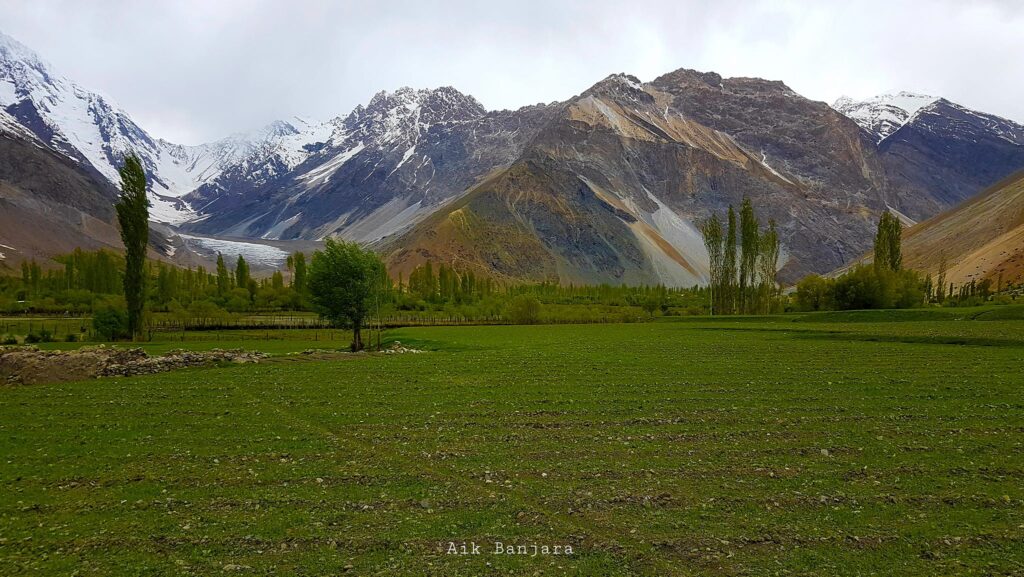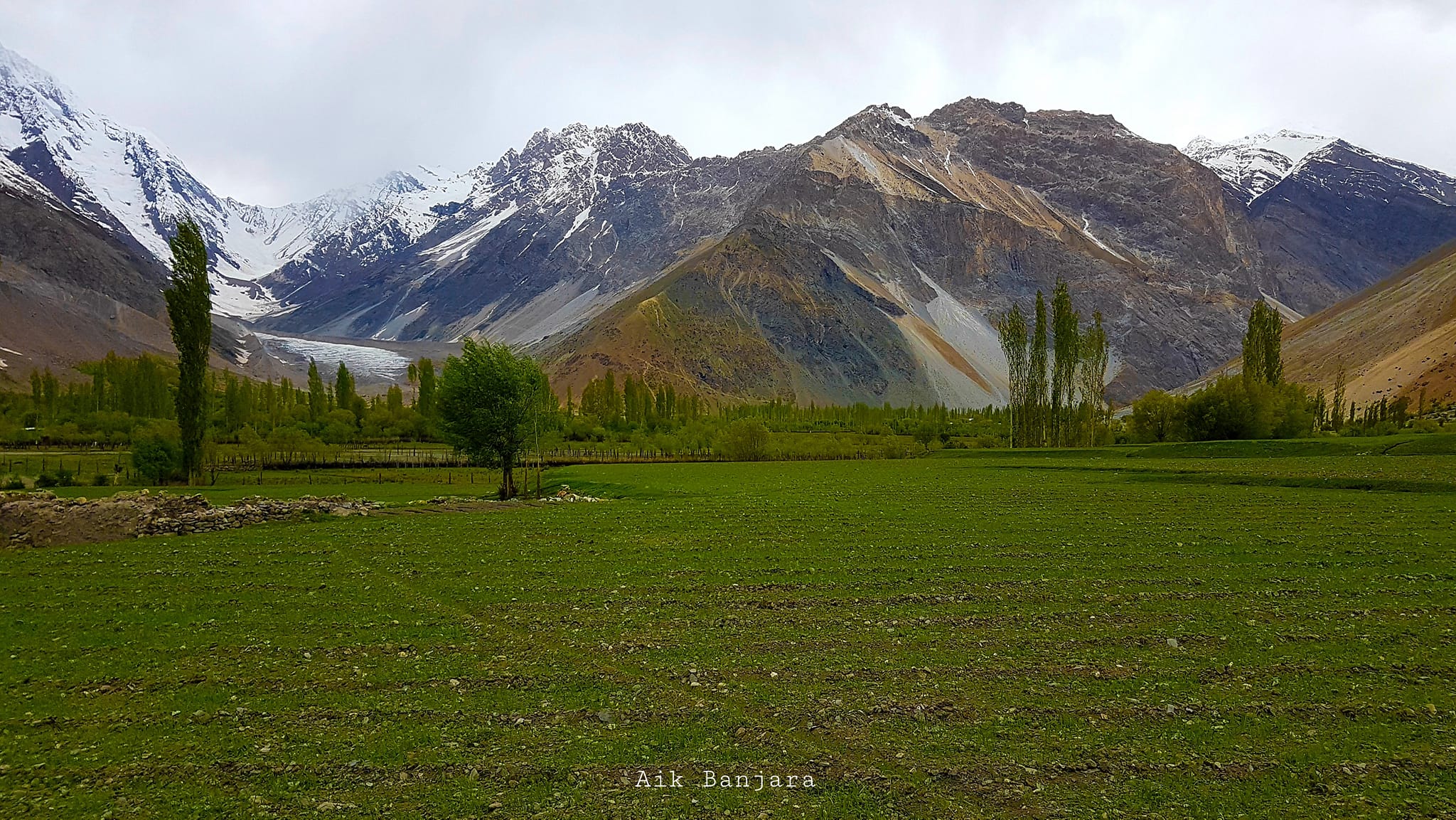
Darkut, A lush green border valley surrounded by snow-peaked mountains in Gilgit Baltista When traveling to Gilgit Baltistan, you’re entering a region of Pakistan that offers breathtaking landscapes, rich culture, and warm hospitality. Nestled in the northernmost part of the country, Gilgit Baltistan is home to towering mountains, lush valleys, and centuries-old traditions. To help you make the most of your journey, we’ve put together this detailed guide covering everything from entry requirements and transportation to dining and safety tips. Whether you’re a first-time visitor or a seasoned traveler, these insights will help you plan a unique and enjoyable vacation.
Travel Planning Tips
Entry Visa
Before anything else, ensure your travel documents are in order. International travelers must apply for a Pakistani visa, and some may need a special permit to enter Gilgit Baltistan, especially when visiting border areas. It’s recommended to apply well in advance and check with the nearest Pakistani embassy for updated visa requirements.
Choosing the Best Time to Travel
The best time to visit Gilgit Baltistan is between May and October, when the weather is pleasant, roads are accessible, and trekking routes are open. Spring and summer are ideal for nature lovers and adventurers, while autumn offers stunning foliage views, especially in valleys like Hunza and Skardu.
Booking Tickets in Advance
Due to limited flights and high tourist demand during peak seasons, book your flights and accommodations well in advance. Whether you’re flying from Islamabad to Gilgit or Skardu or traveling by road, early bookings can save both time and money.
Travel via flights
Air travel services are available only to fly to and from two airports of Gilgit Baltistan
From Gilgit to Islamabad via Pakistan International Airline (PIA)
From Skardu to Islamabad, Lahore, Karachi via Pakistan International Airline (PIA) and Air Blue
For road Travel from Gilgit Baltistan to outside
From Gilgit to Rawalpindi, Lahore, Karachi
From Gilgit to Kashghar, China
From Gilgit to Chitral
From Gahkuch to Rawalpindi, Karachi
From Hunza to Rawalpindin, Karachi
From Skardu to Rawalpindi
From Astore to Rawalpindi
From Chilas to Rawalpindi
Transportation Tips in Gilgit Baltistan
Using Public Transportation
Public transportation in Gilgit Baltistan is limited but functional. Local buses, vans, and shared jeeps connect major towns and villages. While affordable, these options may not be the most comfortable for long distances. Private hire vehicles and tour operators are recommended for flexibility and convenience.
Traveling Across the Karakoram Highway
One of the most scenic routes in the world, the Karakoram Highway (KKH) links Pakistan to China and cuts through Gilgit Baltistan. It’s a must-experience road trip, offering awe-inspiring views of mountains, rivers, and glaciers. Keep in mind that road conditions may vary, especially after rain or snow, so check travel advisories before departure.
Tips for Visiting Main Attractions
Visiting Historical Sites
Gilgit Baltistan is rich in history, with landmarks like Baltit Fort in Hunza, Shigar Fort in Skardu, and the ancient rock carvings near Gilgit. When visiting these sites, consider hiring a local guide to gain deeper insights into their cultural and historical significance.
- Budha Statue in Kargah, Gilgit
- Mughali Shikar in Jutial, Gilgit
- China Yadgar in Daniyor, Gilgit
- Hanzel Stupa in Gilgit
- Baltit Fort in Karimabad, Hunza
- Altit Fort in Aliabad, Hunza
- Sacred Rock in Hunza
- Bubur Stupa in Punial, Ghizer
- Ancient Fort in Upper Gahkuch, Ghizer
- Ancient Fort in Gupis, Ghizer
- Muduri in Yasin, Ghizer
- Shigar Fort in Shigar
- Kharpocha Fort, Skardu
- Manthal, Skardu
Exploring Local Markets
Markets in Gilgit, Hunza, and Skardu offer a delightful shopping experience. You’ll find local handicrafts, woolen shawls, gemstones, and traditional caps. Bargaining is common, so don’t hesitate to negotiate prices, but always do so respectfully.
Enjoying Nature in Gilgit Baltistan
The region is a paradise for nature lovers. Explore Fairy Meadows, hike to Rakaposhi Base Camp, visit Attabad Lake, or take in the views from Deosai Plains. Always travel with a guide in remote or high-altitude areas to ensure safety.
- Khunjrab National Park, Hunza
- Deosai National Park, Baltistan
- Sadpara Lake, Kachura Lake, Katpana Desert, Skardu
- 4.. Darkut Valley and surounding areas bordering Yarkhun, Ghizer
- Asumbar in Yasin, Ghizer
- Shandur, world’s highest polo ground, bordering Chitral, Ghizer
- Rama Lake, Astore
Dining Tips
Trying Local Dishes
Don’t miss the opportunity to try authentic dishes like Chapshuro (meat-filled bread), Mamtu (dumplings), and Giyaling (pancake-style bread). These dishes reflect the region’s unique blend of Central Asian and local influences.
Visiting Restaurants with Unique Views
Many restaurants and cafés, particularly in Hunza and Skardu, are perched on hillsides or riversides, offering breathtaking views while you dine. Look out for local eateries that combine scenic backdrops with traditional flavors — a treat for all senses.
Safety Tips in Gilgit Baltistan
Safety Measures in Urban vs. Rural Areas
While Gilgit Baltistan is generally safe for tourists, safety conditions can vary. Urban centers like Gilgit and Skardu are well-patrolled, while remote areas may lack emergency services. Always inform someone of your travel plans, especially if trekking or exploring rural regions.
Protecting Valuables
Keep valuables secure and avoid displaying expensive items in public. Use hotel safes where available, and carry only necessary cash and documents when out.
Dealing with Drivers and Vendors
Use registered tour operators and avoid unlicensed drivers. Agree on fares in advance to avoid disputes. Most locals are friendly and helpful, but a little caution can go a long way in avoiding misunderstandings.
- Be friendly and polite.
- Learn some essential words in local language.
- Ask about prices beforehand.
- Bargain gently in markets.
- Use mobile apps for navigation.
- Know your destination with drivers before taking a taxi.
Additional Tips for Remote Areas
Using the Local Languages
While Urdu and English are widely understood, learning a few words in Shina, Burushaski, or Balti can go a long way in connecting with locals and showing respect for the culture.
Learn basic phrases.
- Learn some phrases to ask for directions.
- Try to understand basic numbers to handle prices.
- Don’t hesitate to use English if necessary.
- Politely ask for help when needed.
- Learn some food-related phrases.
Respecting Local Customs and Traditions
Gilgit Baltistan is a culturally rich and religiously diverse region. Dress modestly, ask for permission before taking photos of people, and observe local etiquette. Showing respect for traditions is appreciated and enhances the travel experience.
- Wear modest clothing in religious places.
- Politely greet others.
- Show respect to the elderly.
- Seek permission before taking photos in conservative neighborhoods.
- Avoid discussing sensitive topics.
- Respect religious holidays and occasions.
Conclusion
Gilgit Baltistan is more than just a destination; it’s an experience of nature, culture, and adventure combined. With the right planning, transportation knowledge, awareness of local customs, and a sense of curiosity, your journey to this majestic region can become one of the most memorable of your life. Whether you’re trekking among towering peaks or sipping tea in a valley village, Gilgit Baltistan will leave you with stories to tell and a yearning to return.

